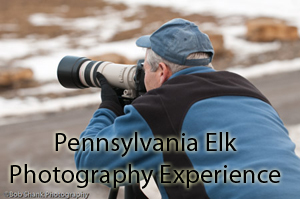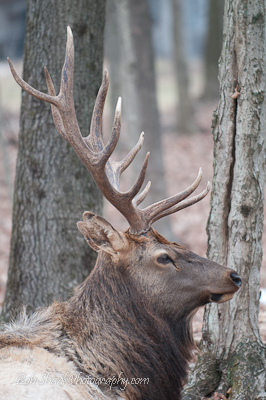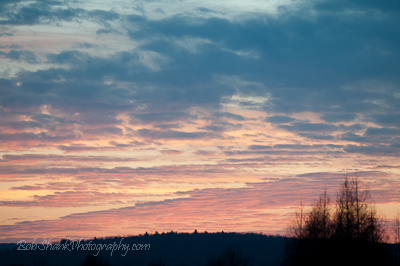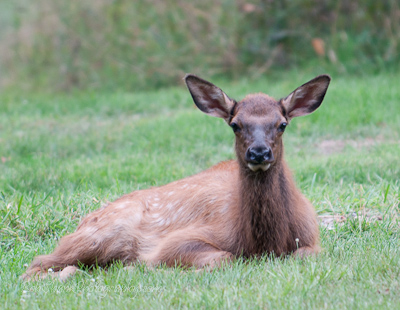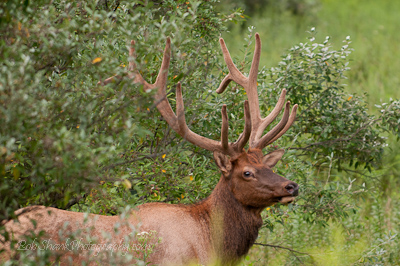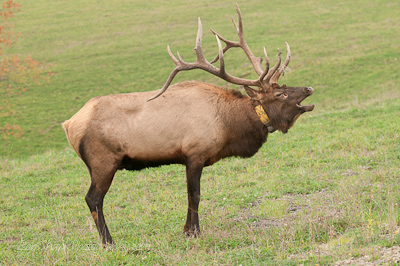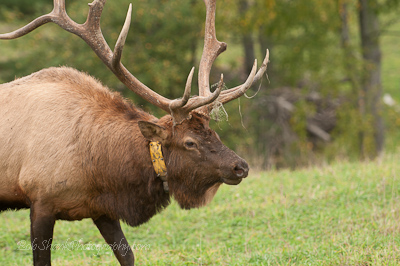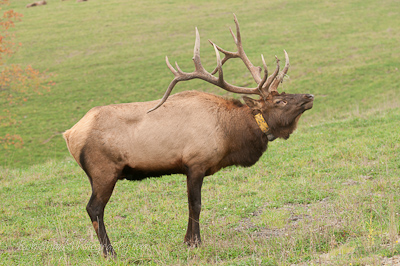Last week my son, James, and I ventured to our favorite spot–Elk County, Pennsylvania. Oh, I know this doesn’t have the romantic sound like Yellowstone, Big Sur, or The Everglades have, but it is the home of a herd of elk here in Pennsylvania and we have a little camp that we like to frequent up on Winslow Hill. We thoroughly enjoy viewing, observing, and photographing the wildlife–especially the elk! I’ve been going to Elk County, PA for over 20 years now and we just cannot seem to get enough! Fortunately for me, James shares this passion with me!
So last week we spent three days there and we had a blast!
On one of our “elk runs,” where we drive to the spots which seem to hold elk, James spotted a cow right alongside the road. I could not see it at first because the guard rail blocked my view. I stopped so James could snap a few quick photos while no other vehicles were coming down the road and I scanned the road ahead for a place to pull off. Stopping on the main thoroughfares and blocking traffic is a nuisance, in bad taste, drives the locals absolutely nuts, and is illegal. Still, some elk observers get so excited about seeing the elk that they simply forget some of the basic rules of elk-viewing etiquette. I quickly found a place to safely pull completely off the road and then we walked back toward the cow with our cameras. James was out ahead of me and once he got closer to the cow I immediately saw that she was accepting of his presence. She was busy eating grass and only looked up once to see who was there and then just went back to eating. We spent approximately 20 minutes photographing this cow elk and she never once showed any sign of alarm or fear of us. We photographed to our heart’s content and she made a most excellent model!
Eventually another car came by and parked safely on the opposite side of the road to get a closer view and capture a few photographs, too. Again, the cow took a glance at her new neighbors and simply went back to feeding in the grass. Photographers and clicking cameras were simply no big deal to her! As the sun continued to get lower in the August sky, she slowly fed away from us. We captured some nice, close photos and were blessed to spend quality time with such a beautiful mammal. Her summer coat shone brightly in the early evening light and all was well in her world and in ours. Nature and wildlife are incredible!
Can you begin to see why James and I enjoy Elk County, Pennsylvania so much? Here are two photos I captured that evening with my old, backup camera the Nikon D70. The old boy still works and captures some half-way decent images. I cannot think of any better way to spend a summer evening!





